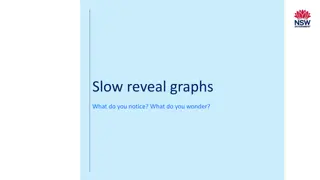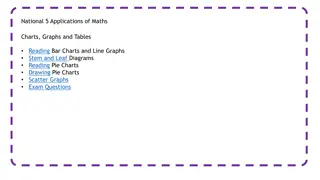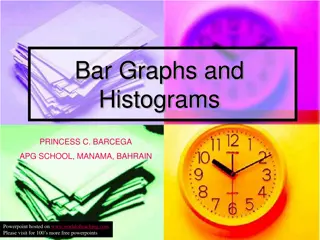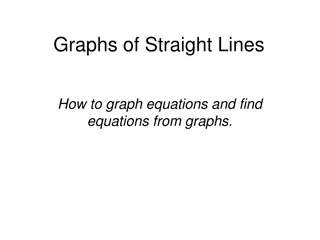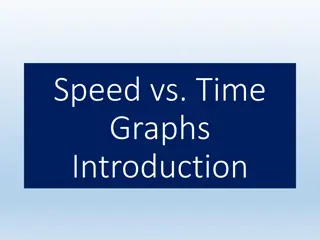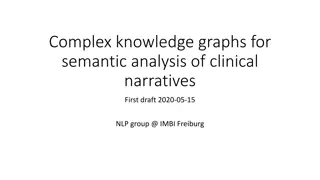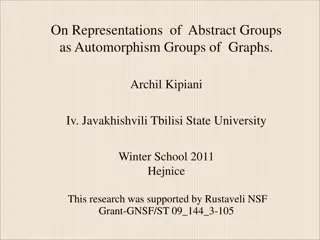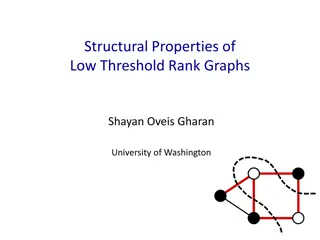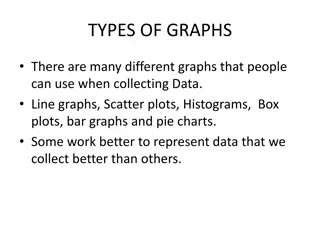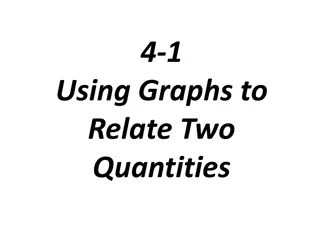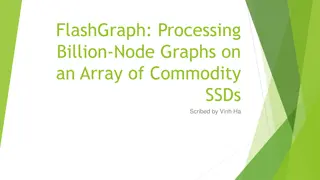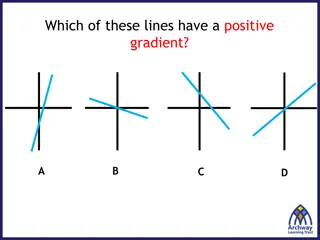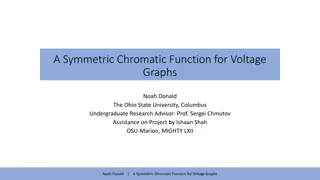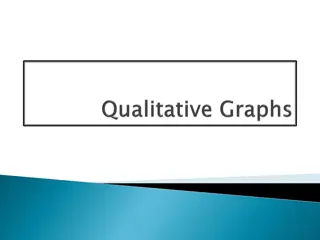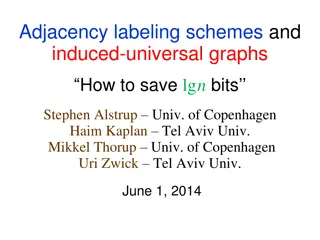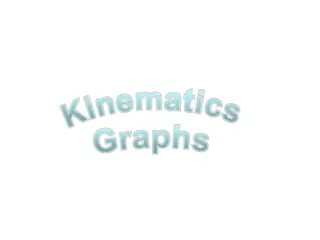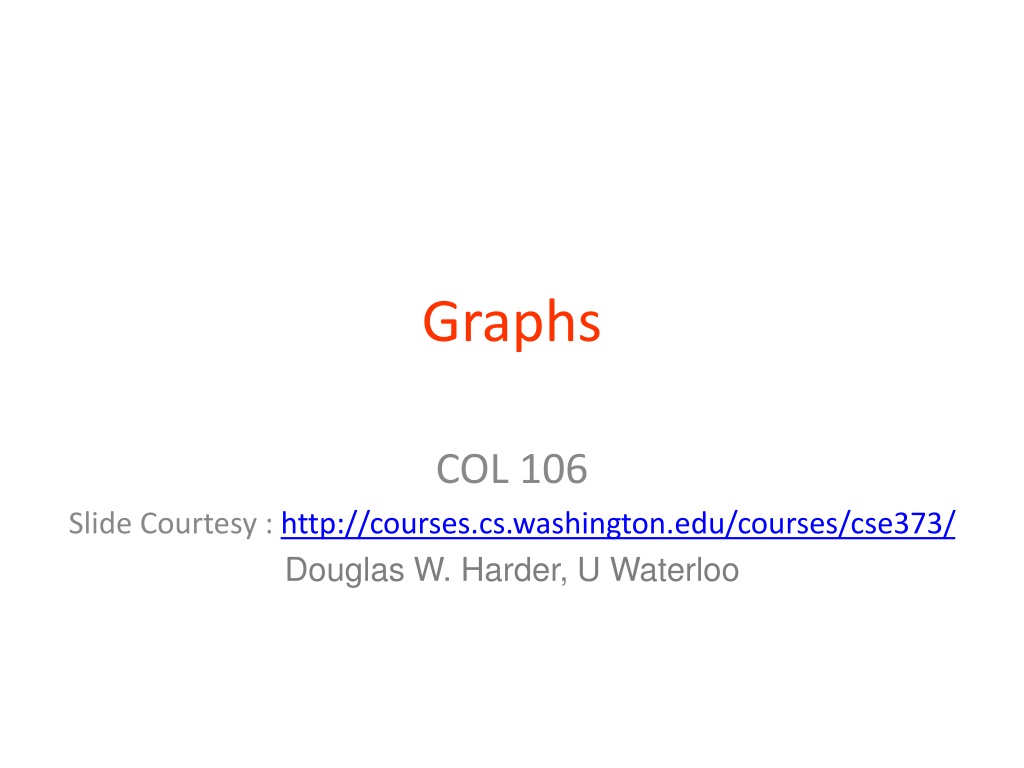
Understanding Graphs: A Comprehensive Lecture Overview
Explore the fundamentals of graphs through a detailed lecture series covering graph terminology, various types of nodes and edges, motivations for graph usage, and practical representations in fields like maze-solving and electrical circuits. Discover how graphs generalize and apply to diverse data structures and problem-solving scenarios. Dive into the world of graphs with this informative resource!
Download Presentation

Please find below an Image/Link to download the presentation.
The content on the website is provided AS IS for your information and personal use only. It may not be sold, licensed, or shared on other websites without obtaining consent from the author. If you encounter any issues during the download, it is possible that the publisher has removed the file from their server.
You are allowed to download the files provided on this website for personal or commercial use, subject to the condition that they are used lawfully. All files are the property of their respective owners.
The content on the website is provided AS IS for your information and personal use only. It may not be sold, licensed, or shared on other websites without obtaining consent from the author.
E N D
Presentation Transcript
Graphs COL 106 Slide Courtesy : http://courses.cs.washington.edu/courses/cse373/ Douglas W. Harder, U Waterloo
What are graphs? Yes, this is a graph . But we are interested in a different kind of graph 12/26/03 Graph Terminology - Lecture 13 2
Graphs Graphs are composed of Nodes (vertices) Edges (arcs) node edge 12/26/03 Graph Terminology - Lecture 13 3
Varieties Nodes Labeled or unlabeled Edges Directed or undirected Labeled or unlabeled 12/26/03 Graph Terminology - Lecture 13 4
Motivation for Graphs node node Consider the data structures we have looked at so far Next Next Value Value Linked list: nodes with 1 incoming edge + 1 outgoing edge 94 Binary trees/heaps: nodes with 1 incoming edge + 2 outgoing edges 97 10 B-trees: nodes with 1 incoming edge + multiple outgoing edges 3 5 96 99 12/26/03 Graph Terminology - Lecture 13 5
Motivation for Graphs How can you generalize these data structures? Consider data structures for representing the following problems 12/26/03 Graph Terminology - Lecture 13 6
CSE Course Prerequisites 461 322 143 373 321 326 142 415 370 410 341 413 417 378 421 Nodes = courses Directed edge = prerequisite 401 12/26/03 Graph Terminology - Lecture 13 7
Representing a Maze S S B E E Nodes = rooms Edge = door or passage 12/26/03 Graph Terminology - Lecture 13 8
Representing Electrical Circuits Switch Battery Nodes = battery, switch, resistor, etc. Edges = connections Resistor 12/26/03 Graph Terminology - Lecture 13 9
Program statements x1 x2 x1=q+y*z x2=y*z-q + - Naive: * * q q y z y*z calculated twice x1 x2 common subexpression eliminated: + - q * q Nodes = symbols/operators Edges = relationships y z 12/26/03 Graph Terminology - Lecture 13 10
Precedence S1 a=0; S2 b=1; S3 c=a+1 S4 d=b+a; S5 e=d+1; S6 e=c+d; 6 5 4 Which statements must execute before S6? S1, S2, S3, S4 3 Nodes = statements Edges = precedence requirements 2 1 12/26/03 Graph Terminology - Lecture 13 11
Information Transmission in a Computer Network 56 Tokyo Seattle Seoul 128 16 New York 181 30 140 L.A. Sydney Nodes = computers Edges = transmission rates 12/26/03 Graph Terminology - Lecture 13 12
Traffic Flow on Highways UW Nodes = cities Edges = # vehicles on connecting highway 12/26/03 Graph Terminology - Lecture 13 13
Graph Definition A graph is simply a collection of nodes plus edges Linked lists, trees, and heaps are all special cases of graphs The nodes are known as vertices (node = vertex ) Formal Definition: A graph G is a pair (V, E) where V is a set of vertices or nodes E is a set of edges that connect vertices 12/26/03 Graph Terminology - Lecture 13 14
Graph Example Here is a directed graph G = (V, E) Each edge is a pair (v1, v2), where v1, v2 are vertices in V V = {A, B, C, D, E, F} E = {(A,B), (A,D), (B,C), (C,D), (C,E), (D,E)} B C A F D E 12/26/03 Graph Terminology - Lecture 13 15
Directed vs Undirected Graphs If the order of edge pairs (v1, v2) matters, the graph is directed (also called a digraph): (v1, v2) (v2, v1) v2 v1 If the order of edge pairs (v1, v2) does not matter, the graph is called an undirected graph: in this case, (v1, v2) = (v2, v1) v2 v1 12/26/03 Graph Terminology - Lecture 13 16
Undirected Terminology Two vertices u and v are adjacent in an undirected graph G if {u,v} is an edge in G edge e = {u,v} is incident with vertex u and vertex v A graph is connected if given any two vertices u and v, there is a path from u to v The degree of a vertex in an undirected graph is the number of edges incident with it a self-loop counts twice (both ends count) denoted with deg(v) 12/26/03 Graph Terminology - Lecture 13 17
Undirected Terminology B is adjacent to C and C is adjacent to B (A,B) is incident to A and to B B Self-loop C A F D E Degree = 0 Degree = 3 12/26/03 Graph Terminology - Lecture 13 18
Directed Terminology Vertex u is adjacent to vertex v in a directed graph G if (u,v) is an edge in G vertex u is the initial vertex of (u,v) Vertex v is adjacent from vertex u vertex v is the terminal (or end) vertex of (u,v) Degree in-degree is the number of edges with the vertex as the terminal vertex out-degree is the number of edges with the vertex as the initial vertex 12/26/03 Graph Terminology - Lecture 13 19
Directed Terminology B adjacent to C and C adjacent from B B C A F D E In-degree = 0 Out-degree = 0 In-degree = 2 Out-degree = 1 12/26/03 Graph Terminology - Lecture 13 20
Handshaking Theorem Let G=(V,E) be an undirected graph with |E|=e edges. Then v = 2e deg(v) Add up the degrees of all vertices. V Every edge contributes +1 to the degree of each of the two vertices it is incident with number of edges is exactly half the sum of deg(v) the sum of the deg(v) values must be even 12/26/03 Graph Terminology - Lecture 13 21
Graph Representations Space and time are analyzed in terms of: Number of vertices = |V| and Number of edges = |E| There are at least two ways of representing graphs: The adjacency matrix representation The adjacency list representation 12/26/03 Graph Terminology - Lecture 13 22
Adjacency Matrix A B C D E F B 0 1 0 1 0 0 A C A B 1 0 1 0 0 0 F C 0 1 0 1 1 0 D E 1 0 1 0 1 0 D E 0 0 1 1 0 0 1 if (v, w) is in E M(v, w) = 0 0 0 0 0 0 F 0 otherwise Space = |V|2 12/26/03 Graph Terminology - Lecture 13 23
Adjacency Matrix for a Digraph A B C D E F B 0 1 0 1 0 0 A C A B 0 0 1 0 0 0 F C 0 0 0 1 1 0 D E 0 0 0 0 1 0 D E 0 0 0 0 0 0 1 if (v, w) is in E M(v, w) = 0 0 0 0 0 0 F 0 otherwise Space = |V|2 12/26/03 Graph Terminology - Lecture 13 24
Adjacency List Foreach v in V, L(v) = list of w such that (v, w) is in E a b A list of neighbors B D B C B A A C C B D E F D D A E C E E C D F Space = a |V| + 2 b |E| 12/26/03 Graph Terminology - Lecture 13 25
Adjacency List for a Digraph Foreach v in V, L(v) = list of w such that (v, w) is in E a b A B D B C B C A C E D F D D E E E F Space = a |V| + b |E| 12/26/03 Graph Terminology - Lecture 13 26
Searching in graphs Find Properties of Graphs Spanning trees Connected components Bipartite structure Biconnected components Applications Finding the web graph used by Google and others Garbage collection used in Java run time system 12/26/03 Graph Searching - Lecture 16 27
Graph Searching Methodology Depth- First Search (DFS) Depth-First Search (DFS) Searches down one path as deep as possible When no nodes available, it backtracks When backtracking, it explores side-paths that were not taken Uses a stack (instead of a queue in BFS) Allows an easy recursive implementation 12/26/03 Graph Searching - Lecture 16 28
Depth First Search Algorithm Recursive marking algorithm Initially every vertex is unmarked DFS(i) i DFS(i: vertex) mark i; for each j adjacent to i do if j is unmarked then DFS(j) end{DFS} DFS(j) j k Marks all vertices reachable from i 12/26/03 Graph Searching - Lecture 16 29
DFS Application: Spanning Tree Given a (undirected) connected graph G(V,E) a spanning tree of G is a graph G (V ,E ) V = V, the tree touches all vertices (spans) the graph E is a subset of E such that G is connected and there is no cycle in G 12/26/03 Graph Searching - Lecture 16 30
Example of DFS: Graph connectivity and spanning tree 2 DFS(1) 1 7 3 5 6 4 12/26/03 Graph Searching - Lecture 16 31
Example Step 2 2 DFS(1) DFS(2) 1 7 3 5 6 4 Red links will define the spanning tree if the graph is connected 12/26/03 Graph Searching - Lecture 16 32
Example Step 5 2 DFS(1) DFS(2) DFS(3) DFS(4) DFS(5) 1 7 3 5 6 4 12/26/03 Graph Searching - Lecture 16 33
Example Steps 6 and 7 2 DFS(1) DFS(2) DFS(3) DFS(4) DFS(5) DFS(3) DFS(7) 1 7 3 5 6 4 12/26/03 Graph Searching - Lecture 16 34
Example Steps 8 and 9 2 DFS(1) DFS(2) DFS(3) DFS(4) DFS(5) DFS(7) 1 7 3 5 6 Now back up. 4 12/26/03 Graph Searching - Lecture 16 35
Example Step 10 (backtrack) 2 DFS(1) DFS(2) DFS(3) DFS(4) DFS(5) 1 7 3 5 Back to 5, but it has no more neighbors. 6 4 12/26/03 Graph Searching - Lecture 16 36
Example Step 12 2 DFS(1) DFS(2) DFS(3) DFS(4) DFS(6) 1 7 3 5 6 Back up to 4. From 4 we can get to 6. 4 12/26/03 Graph Searching - Lecture 16 37
Example Step 13 2 DFS(1) DFS(2) DFS(3) DFS(4) DFS(6) 1 7 3 5 From 6 there is nowhere new to go. Back up. 6 4 12/26/03 Graph Searching - Lecture 16 38
Example Step 14 2 DFS(1) DFS(2) DFS(3) DFS(4) 1 7 3 5 Back to 4. Keep backing up. 6 4 12/26/03 Graph Searching - Lecture 16 39
Example Step 17 2 DFS(1) 1 7 All the way back to 1. 3 5 Done. 6 4 All nodes are marked so graph is connected; red links define a spanning tree 12/26/03 Graph Searching - Lecture 16 40
Finding Connected Components using DFS 2 1 3 7 10 4 9 5 6 8 11 3 connected components 12/26/03 Graph Searching - Lecture 16 41
Connected Components 2 1 3 7 10 4 9 5 6 8 11 3 connected components are labeled 12/26/03 Graph Searching - Lecture 16 42
Performance DFS n vertices and m edges Storage complexity O(n + m) Time complexity O(n + m) Linear Time! 12/26/03 Graph Searching - Lecture 16 43
Another Example Perform a recursive depth-first traversal on this graph
Another Example Visit the first node A
Another Example A has an unvisited neighbor A, B
Another Example B has an unvisited neighbor A, B, C
Another Example C has an unvisited neighbor A, B, C, D
Another Example D has no unvisited neighbors, so we return to C A, B, C, D, E
Another Example E has an unvisited neighbor A, B, C, D, E, G




